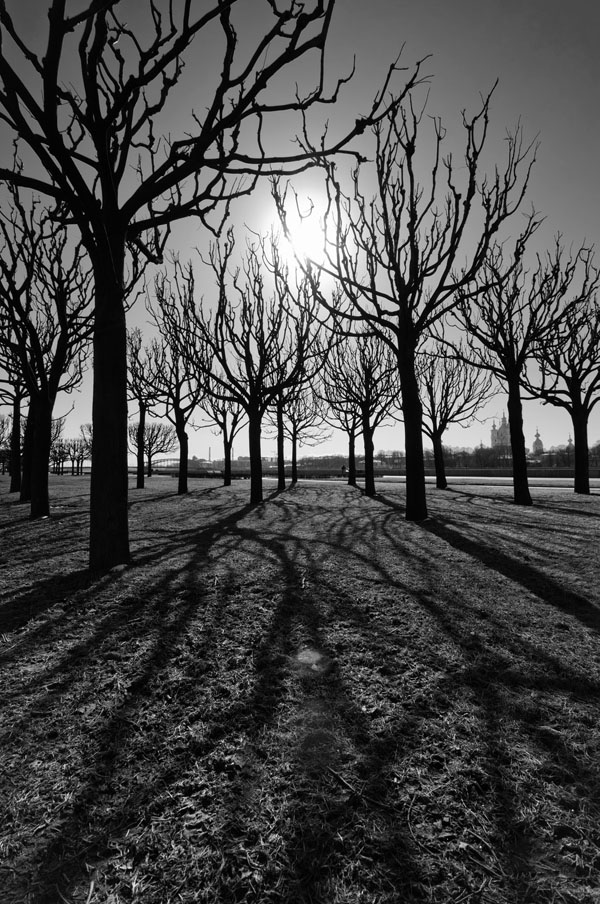
If a black and white photo of your garden appeared on your kitchen table what impression would it leave? Knowing that winter in the Great Plains occupies a significant number of days, such consideration and planning for a garden with winter appeal is important.
Now, with the absence of color what are we looking for from the B&W exposure?
Structure: Certainly trees, evergreens, and shrubs give a visual framework of the structural component of the landscape. We also may have arbors, archways, gates, pergolas or fences now stripped of foliage revealing their naked, structural contribution to the overall composition. What structural beauty does the photo reveal?
Texture & Form: There are a significant number of trees and shrubs that display wonderful bark textures. The arrival of winter accentuates the beauty of Birch, Paperbark Maple, Sycamore, Lacebark Pine, Winged Euonymus, Cornelian Cherry. The ruggedness of Hackberry, Oaks, Coffeetree, Persimmon; along with the contrasting softness and sheen of Aspen, Cherry, Serviceberry, Mountain Ash and Yellowood.
The Artistic Form of the plant material is more pronounced as well. A sampling of predominant forms that surface are: Vase Shaped, Rounded, Upright, Broad, Oval, Narrow, Contorted, Pyramidal. Such textures and forms are often highlighted throughout the winter with frost and snow. Intermixed within, are the berries, seed heads and pods that persist, enhancing visual interest and providing a significant food source for our feathered friends.
Shadow Play & Color Tones: I know we long for light and may consider shadow play to be a stretch in our landscape interactions, but I promise such is not the case. If your structure, texture and form are significant, the ripple effects are exquisite shadows that appear upon the ground plane, or the available empty winter canvas. Oftentimes, the overlooked gift of shadow play is one of the most surprising. Guaranteed to show up in a B&W photo as an unexpected, artistic expression of our surroundings.
Color Tones- We’ve all seen the wonderful contrast of the red stems of dogwood against the snow. I never grow tired of that image, and on winter drives to Minnesota I love seeing the composition along the roadways. Equally, I enjoy the vivid yellows of the Willows in late winter/early spring and the contrast of their color against the slate sky. However, with B&W our color tones deal with only two options and convey depth; mysterious darkness and varying intensity of lights. How does our landscape measure up in the interest and depth of the color tones captured?
Now where’s the application in all this copy? Let’s go back to the second line of the opening paragraph: Knowing that winter in the Great Plains occupies a significant number of days, such consideration and planning for a garden with winter interest becomes all the more important.
Our goal is to help extend the enjoyment of the garden into all of the seasons. We are of the opinion that if we get the components right in making one’s garden more distinctive and user friendly in the winter months, the study from a simple black and white photo carries over into all the other seasons as well. The tool of B&W photography helps to capture the quiet potential of winter and softly speaks to us about the important contributions we can make to our landscapes come spring. Now that’s Working With Winter.
Exciting! New plants in the garden! But wait....now what? How much water? When? Quick considerations before watering: Sun & Shade - Although most may say that shade gardens need less...
Spring fills us with wonder. Not in the ‘feeling of surprise mingled with admiration, caused by something beautiful’ kind of way. More along the lines of ‘what can I plant in my empty...